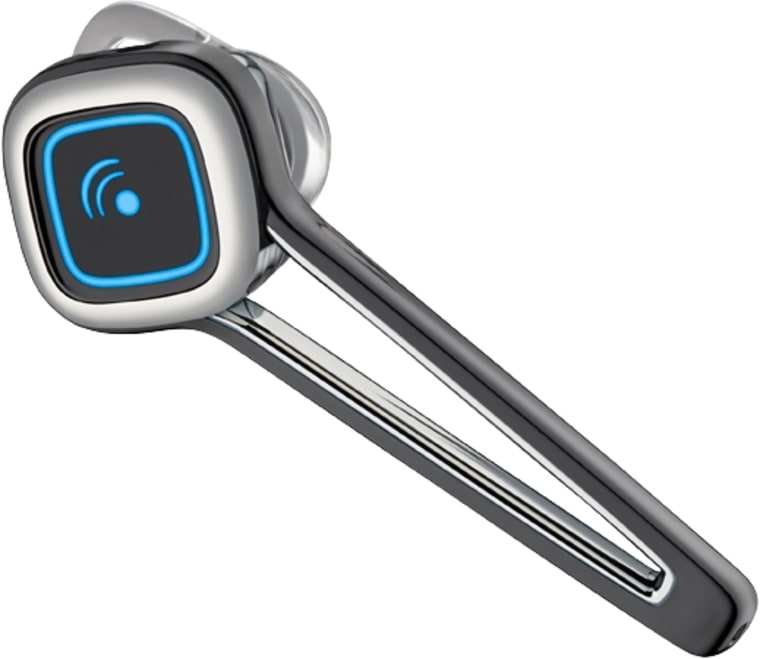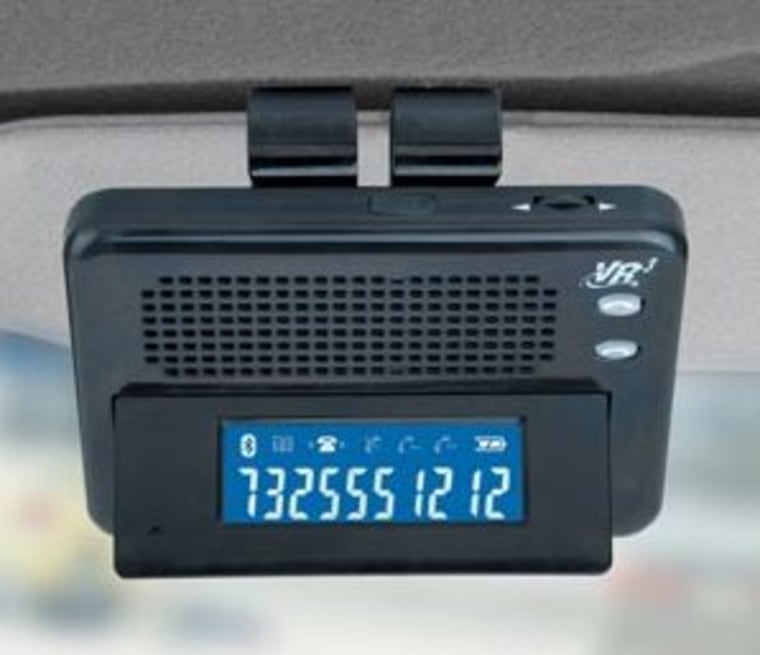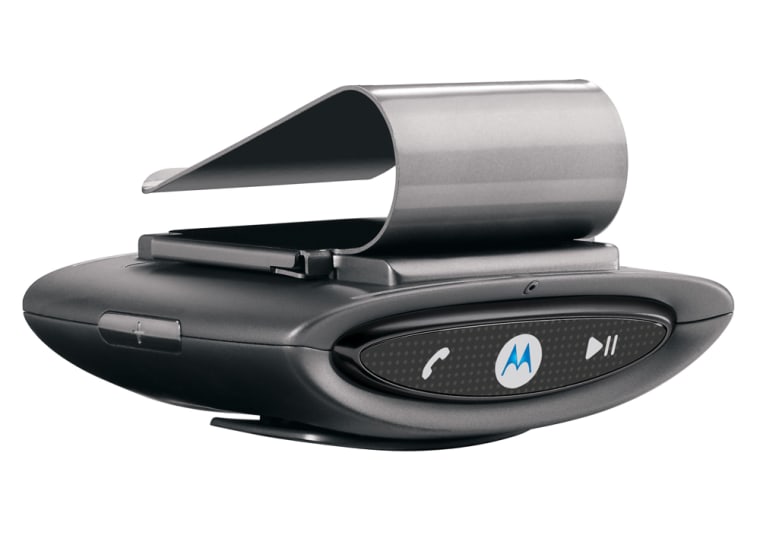Welcome, California and Washington, to Version 2.0 of driving and talking on the cell phone.
Remember your first day of school, when you didn't know if you could walk in the classroom without trembling, and you worried about whether you'd make the grade? Today is going to be a little bit like that, because today you have to get in your vehicles and drive without holding a cell phone in your hands. It's the law now.
A funny-sounding technology called Bluetooth will help you achieve this. But if you haven't tried it out yet, today is not the day to practice. Try it out when you're parked somewhere, or in your driveway at home. Use it when you're confident and comfortable with the technology, and if you're not — don't test it out while you're behind the wheel.
Bluetooth is much-improved from its early days 10 years ago. But, for initial setup, it still requires some dexterity and patience — qualities that are key for good driving, so save your concentration for that.
Drivers in New York, Connecticut, New Jersey and Washington, D.C., have been living for awhile with handheld cell phone bans, and there are a growing number of Bluetooth hands-free devices that can help.

They include headsets as well as speakerphones for those who don’t want to fuss with an earpiece. Also, Ford, in conjunction with Microsoft, offers Bluetooth connections as a built-in option on various Ford, Lincoln and Mercury models. (Msnbc.com is a joint venture of Microsoft and NBC Universal).
Most of you, however, aren’t likely to run out and get a new car to comply with the new laws.
Bluetooth car speakerphones are a booming market, so to speak. In 2007, the Bluetooth aftermarket, including car speakerphones and GPS units was around 25 million units, a 54 percent increase from 2006, according to IMS Research.
Check for Bluetooth
The first thing to do is make sure you have a phone that has a Bluetooth chip in it to communicate with a headset or speakerphone. Most current cell phones are Bluetooth-enabled.
“The penetration rate of Bluetooth in cell phones is huge,” said Douglas McEuen, ABI Research’s senior analyst for wireless semiconductors. “We’re estimating that worldwide, the 2008 market for cellular handsets is going to be close to 1.2 billion units, and over half of those will have will have Bluetooth capability. The volume of it is just enormous.”
But not everyone who has the technology uses it. “There’s a large percentage of people who aren’t activating or using their Bluetooth,” McEuen said.
“It might be because some people are still learning about the technology, but also some of them haven’t been forced to use it” in places where there are no restrictions on driving while talking on a cell phone.
Bluetooth lets devices within a 33-foot range connect to each other without wires. In order for that to happen, both devices need to have some initial set-up and then need to be “paired” to communicate with each other.
The pairing process has improved over the years, but can still be a frustrating experience, especially if you’re among two-thirds of the market using a phone that has a specification known as Bluetooth 1.1 or 1.2.
Phones that have the more recent Bluetooth specification of 2.0 or 2.1 generally are easier to set up and to pair. To find out what you have, check your phone’s menu for information, the manual or the manufacturer’s Web site.
“We’ll definitely see the 2.0 and 2.1 specifications becoming the dominant version of Bluetooth by 2010,” said McEuen.
Better 'pairing' is coming
A new Bluetooth specification, 2.1+EDR (Enhanced Data Rate) was approved last year by the Bluetooth Special Interest Group, which developed the technology and named it after a 10th-century Danish king.
2.1+EDR adds a feature called “secure simple pairing,” eliminating the need to enter a four-digit code for pairing, and also provides for improved battery power for Bluetooth devices such as headsets.
But products using the new specification are just starting to come on the market. And there are very few phones out so far that come with the Bluetooth chip for it. Among them are some phones made by LG and Samsung, according to a Bluetooth SIG spokeswoman who checked the organization’s “Qualified Products Database.”
Speakerphone choices
If you opt for a hands-free speakerphone, hang onto the receipt and make sure you can return the unit if you’re not happy with it. You may need to try out two or three before finding one you like. User comments at various Web sites about speakerphones note that sound quality can be an issue. Among some of the choices:
Motorola MotoROKR T505 Bluetooth In-Car Speakerphone, $139.99. Like many speakerphones, it clips to a vehicle’s sun visor. The T505 has a 2-watt speaker, and features “Audio Caller ID” which speaks the number of the person calling you. It has 18 hours of talk time.

BlueAnt Supertooth 3, $109.95. This speakerphone announces an incoming caller’s name or number, and all you need to say is “OK” to accept the call, according to the company. There are also voice prompts to help you connect the speakerphone with your cell phone and to upload your address book. It has 15 hours’ talk time.
Jabra SP5050, $99. Resembling a large garage-door opener in size, the SP5050 also clips onto a sun visor. It comes with a “Night Driving Mode,” which turns off the unit’s LED lights to reduce distractions, according to Jabra. It has 12 hours of talk time.
Parrot MiniKit, $70. This 3.5-ounce unit is compact at 4.3 inches high, 2.5 inches wide and 1.2 inches deep. It provides 10 hours of talk time and has a 2-watt speaker.
VRBT 300V Bluetooth Hands-Free Cell Phone Car Kit, $55. Available at stores like Costco and Home Depot, it is not the most modern-looking of devices with its blue, backlit LCD screen, but is a reasonable price. Estimated talk time is between 8 and 10 hours.
